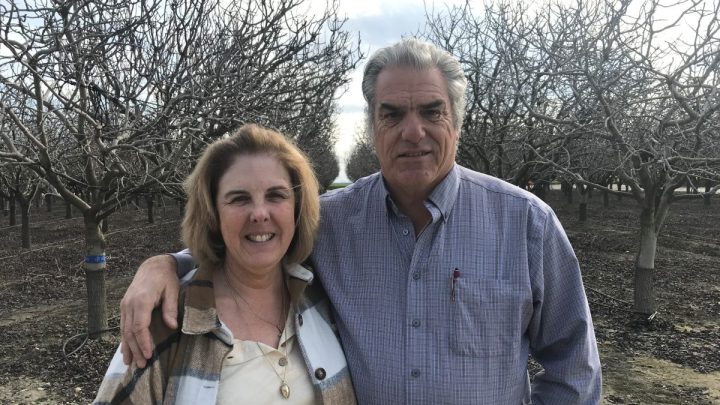
Growing pistachios is a tough business. Here’s one couple’s story.
Growing pistachios is a tough business. Here’s one couple’s story.

The U.S. is the world’s leading producer of pistachios, and much of that production happens in California. American Pistachio Growers, a trade group, has been trying to expand its customer base abroad — in China, Europe and increasingly India.
In the state’s Central Valley, some farmers are pulling out almond and walnut trees and replacing them with pistachios, which require less water. Between 2020 and 2022, farmers increased the state’s pistachio acreage by more than 20% to a total of 446,000 acres of trees.
But pistachios — and growers — are grappling with a changing climate.
Stephen and Klytia Burcham’s ranch house looks out onto the couple’s pistachio orchard in Firebaugh, California, west of Fresno. Klytia’s dad, Larry Gage, planted the trees around 25 years ago.
“When he first planted the pistachio trees here, they called him a stick farmer because it looked like he’d planted a bunch of sticks out there,” Klytia said. “Nobody had really planted them this far north yet.”
Those sticks grew, and the Burchams now have 18,332 pistachio trees. “They take seven years for the first harvest, and so he was able to see the second harvest,” she said.
Pistachio trees can live more than a century, which Klytia said was part of the thinking when her father started the orchard as an investment for his grandchildren.
The pistachio trees are planted in neat rows stretching into the distance over 114 acres.
“These are the trees, the wonderful trees that we’re growing,” Stephen said, explaining that most are female. Male trees are sprinkled here and there throughout the orchard.
“All they have to do is the pollination,” he said. “The girls take care of all the rest.”
Last year was not a good one for the Burchams. They harvested the usual way — shaking the trees with a machine to get ripe pistachios (which Stephen calls “diamonds”), which grow in clusters and turn a blush pink when they’re ready.
“You’ll do your first shake for about three seconds because you only want to get the diamonds off,” Stephen said. “And then you come back with the second shake, and you do it for the full five to six [seconds].”
“This is my crop for next year,” he said, pointing to the baby pistachios that need another season. “This is already on the tree, so if I shake the hell out of it, you’re gonna wind up dropping this.”
But many of the pistachio hulls, which encase the entire nut in its shell, were different last year.
“They were stuck on the tree,” Klytia said, adding she’d never seen that happen before.
The Burchams ended up bringing in just half of their usual production and revenue, estimating they lost $400,000 on last year’s crop. They even took out a crop loan for the first time.
It’s still not clear to them what happened. But they suspect last year’s fluctuating temperatures had something to do with it.
“We would have really warm weather for a week, and then we would have really cold weather,” Klytia recalled. Pistachios need that cold weather consistently at night.

Water is another perennial concern; their ration from the local irrigation district has been slashed in recent years.
“We had a 35% cut overall from our original allotment, and I had to make up for that somehow,” Stephen said. They installed a new well two years ago.
This year, the Burchams got their full allotment of water, thanks to lots of rain.
Farming feels like rolling the dice, Klytia said.
“You don’t see a whole bunch of us in Vegas and Tahoe, but we gamble every year because we have no idea what our price is going to be, and we have no idea what our crop’s gonna be,” Klytia said.
The Burchams are also struggling with higher costs for fertilizer and labor. They talk about how much longer they can hold on.
“We have that conversation, as much as we hate that conversation, but it is a reality,” Stephen said.
Running the orchard was a commitment he made to his father-in-law. “I took it over on a promise that I would make it everything that he wanted,” Stephen said. “So far, I have done that. And I plan to do as he wanted me to. And that’s transferring it on to my kids.”
The Burchams are hopeful about an abundant crop this year — but won’t know for sure until the harvest starts in September.
There’s a lot happening in the world. Through it all, Marketplace is here for you.
You rely on Marketplace to break down the world’s events and tell you how it affects you in a fact-based, approachable way. We rely on your financial support to keep making that possible.
Your donation today powers the independent journalism that you rely on. For just $5/month, you can help sustain Marketplace so we can keep reporting on the things that matter to you.












